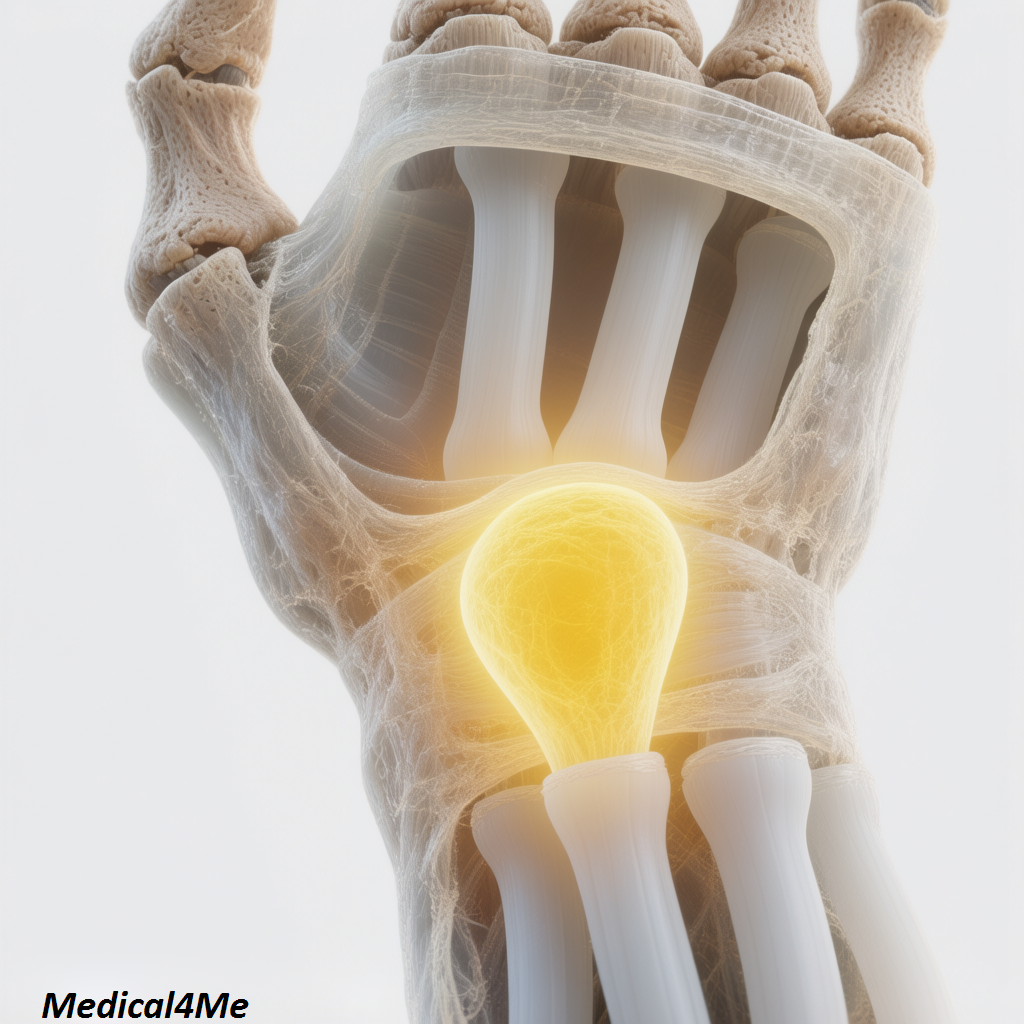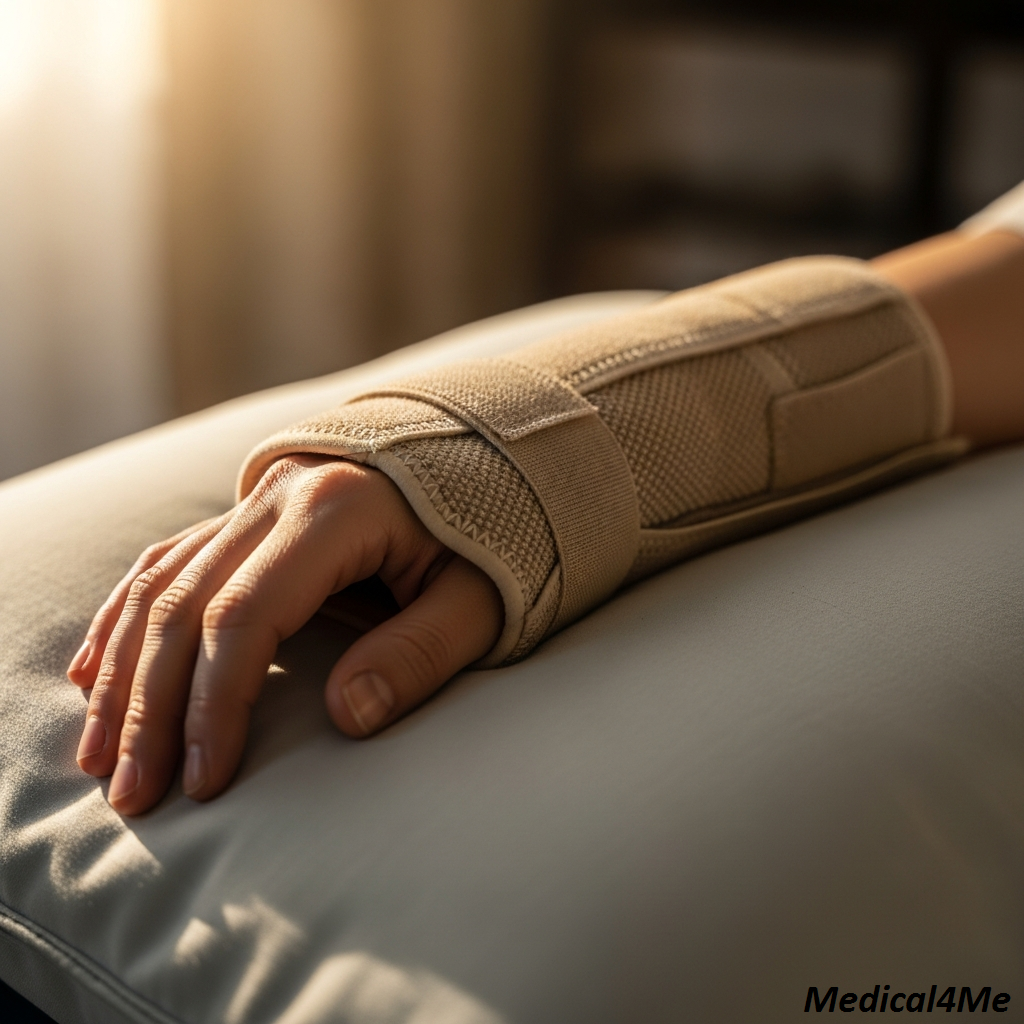Carpal Tunnel Syndrome: A Doctor’s Honest Guide
Hello, my friend. I am Dr. Saqlain Mushtaq. I want you to take a moment and just breathe. I know why you are reading this. It is probably late at night, the house is quiet, but your mind is racing because your hand feels… wrong.
Maybe it started as a subtle tingling in your thumb a few months ago, something you shook off like a bad dream. But now, perhaps you are dropping your coffee mug in the morning because your grip just gives out. Or maybe you are waking up at 3:00 AM with a burning sensation shooting up your arm, feeling like your hand has been replaced by static electricity on a television screen.
It is terrifying when the parts of us that we use to interact with the world—our hands—stop obeying us. It feels like a betrayal. But I am here to tell you, clearly and calmly: Carpal Tunnel Syndrome is not a mystery. It is mechanical. It is solvable. And most importantly, having it does not mean you are broken.
We are going to walk through this together, step by step. I will explain the “why” and the “how” without the confusing medical jargon, just honest talk between you and me.

What Is Actually Happening Inside Your Wrist?
To understand the pain, we have to understand the architecture of your arm. I want you to picture your wrist not as a joint, but as a very busy, very tight fiber-optic cable duct buried under a city street.
This “duct” is the carpal tunnel. It is a narrow passageway made of bone on the bottom and a tough ligament on the top. It is a rigid space; it does not stretch. Inside this crowded tunnel, there are nine tendons that control your finger movements. These are like the thick power cables. Squeezed right in the middle of them is the “fiber-optic cable”—the Median Nerve.
This nerve is a VIP. It controls the feeling in your thumb, index finger, middle finger, and half of your ring finger. It also controls the muscles at the base of your thumb.
Now, imagine if those “power cables” (the tendons) get swollen from overuse or inflammation. They get thicker. But the tunnel walls do not move. So, who gets crushed? The soft, delicate fiber-optic cable. The Median Nerve gets compressed. When a nerve is compressed, it misfires. That misfire is the tingling, pain, and numbness you are feeling right now.
My first thought when a patient describes this is always: “Is this a plumbing problem (blood flow) or an electrical problem (nerves)?” With Carpal Tunnel, it is 100% an electrical short-circuit caused by overcrowding.
The Three Stages of Symptoms
One thing that baffles my patients is how the symptoms change over time. It isn’t always pain. In fact, the worst cases often have no pain at all—just silence.
1. The Whisper (Early Stage)
This is where you probably are right now. You wake up at night with a numb hand. You feel the need to “shake it out” (we call this the Flick Sign) to get the blood flowing. You might feel a faint buzzing in your thumb when holding a phone or driving.
2. The Shout (Middle Stage)
The nerve is now irritated constantly. You feel pain radiating up your forearm. Your fingers feel swollen and useless, even though they look normal. Buttons become difficult. You might drop things unexpectedly.
3. The Silence (Late Stage)
This is the danger zone. The pain stops, which sounds good, but it is actually terrible. It means the nerve signals are being completely blocked. The muscles at the base of your thumb start to shrink (atrophy). You lose the ability to pinch things. Once the muscle dies, it is very difficult to bring it back.
The “Pinky Test”: Here is a quick way to check yourself. Does your little finger (pinky) hurt? If yes, it is probably not Carpal Tunnel. The Median Nerve does not connect to the pinky. If the pinky is involved, we look at the elbow (Cubital Tunnel), not the wrist.
It Can Happen to Anyone
I don’t want you to think this is just a “typist’s disease.” That is a myth. Let me share a few stories from my clinic (names changed for privacy) so you can see the variety.
The Architect: Amara, 42
Amara came to me in tears, not because of pain, but because she couldn’t sketch anymore. She lives in Chicago and has spent 20 years gripping pencils and using a mouse. She thought she just needed a vacation. But when she tried to pick up her tea cup, her thumb just… folded. She had ignored the night numbness for three years. By the time she saw me, she had significant muscle wasting. We had to move fast.
The Mechanic: Elias, 58
Elias, a hardworking man from Ohio, had never used a computer in his life. He worked with impact wrenches and vibrating tools for 35 years. The constant vibration caused massive inflammation in his tendons. He thought he just had “tough hands” or arthritis. CDC guidelines state that vibration is actually a higher risk factor than typing. Elias needed surgery because his tunnel was simply too thick from scar tissue.
The New Mom: Sarah, 29
This one surprises people. Sarah was 8 months pregnant when her hands went numb. She was terrified she was having a stroke. I reassured her that this is incredibly common. Pregnancy causes fluid retention (edema) all over the body, including inside the carpal tunnel. The extra fluid squeezes the nerve. For Sarah, we didn’t need surgery. We used splints, and the symptoms vanished two weeks after her baby was born.
The Diagnostic Journey: What to Expect
If you come to see a doctor, or visit us here at Medical4Me, we won’t just guess. We need proof. Here is exactly what happens in the exam room:
- Tinel’s Sign: I will lightly tap over the nerve at your wrist, like a drummer. If it sends an electric shock down your fingers, that is a positive sign.
- Phalen’s Maneuver: I will ask you to push the backs of your hands together, fingers pointing down, for 60 seconds. This manually closes the tunnel. If your fingers go numb within a minute, we know the tunnel is tight.
- Durkan’s Test: I will simply press my thumbs onto your wrist for 30 seconds. It is the most sensitive manual test we have.
- EMG (Electromyography): This is the scary-sounding one, but it is vital. We place small electrodes on your skin and measure how fast the electricity travels down your arm. If the speed drops at the wrist, we have located the traffic jam.
Treatment: From Lifestyle to Surgery
To be perfectly honest, the medical community is shifting away from “surgery first.” We want to try everything else before we cut.
Step 1: The “Stop It” Phase (Conservative)
For mild cases, we change the environment.
- Night Splints: This is non-negotiable. You must wear a rigid brace at night that keeps your wrist in a neutral (straight) position. This keeps the tunnel open while you sleep, giving the nerve 8 hours of recovery time.
- Nerve Gliding: These are specific exercises where you move your hand to pull the nerve back and forth through the tunnel, like flossing a tooth. It breaks up adhesions.
Step 2: The “Calm It” Phase (Medication)
If splints aren’t enough, we use chemistry to shrink the swelling. We rely on two main categories:
1. NSAIDs (Non-Steroidal Anti-Inflammatory Drugs):
You know these as Ibuprofen (Advil, Motrin) or Naproxen (Aleve). They work by blocking enzymes (COX-1 and COX-2) that create inflammation signals. However, you cannot take these forever. They can cause stomach ulcers and kidney strain. They are a bridge, not a destination.
2. Corticosteroid Injections:
We inject a powerful anti-inflammatory (like Triamcinolone or Methylprednisolone) directly into the tunnel. It sounds painful, but it provides instant relief for about 80% of patients. It shrinks the swollen tendons rapidly.

Step 3: The “Fix It” Phase (Surgery)
When do we operate? We operate when the nerve is dying (numbness is constant) or when the pain is ruining your life. The surgery is called a Carpal Tunnel Release.
Here is a Pros and Cons breakdown to help you decide:
| Feature | Conservative Treatment (Splints/Meds) | Surgery (Carpal Tunnel Release) |
|---|---|---|
| Mechanism | Reduces swelling of the “contents” of the tunnel. | Cuts the roof of the tunnel to make the tunnel bigger. |
| Success Rate | Effective for mild symptoms (approx. 40-50% cure). | Curative for severe cases (90-95% success). |
| Downtime | Zero downtime. | 2-4 weeks for heavy lifting; 2 months for full strength. |
| Permanence | Symptoms often return if you stop the treatment. | Usually permanent. The ligament grows back looser. |
| Risks | Medication side effects (ulcers, blood pressure). | Infection (rare), pillar pain (soreness in the palm). |
When You Must See a Doctor Immediately
As your friend, I need to be strict here. You can wait and see with a lot of things, but nerves are unforgiving. If they die, they often do not grow back. Seek help if:
- You have lost the feeling in your fingertips completely.
- You look at the fleshy mound of your thumb (the thenar eminence) and it looks “dented” or flat compared to the other hand.
- You drop things without realizing you were letting go.
Mayo Clinic specialists emphasize that waiting too long when muscle wasting is present can result in permanent disability, even after surgery.
Frequently Asked Questions My Patients Ask
No. That is a myth. Knuckle cracking affects the joints, not the nerve tunnel. However, it might reduce grip strength over decades.
Most people unconsciously sleep with their wrists bent (curled in). This position increases pressure in the tunnel, waking you up with numbness.
The data is mixed. Some studies suggest B6 helps nerve function, but taking too much can actually damage nerves. Always consult your doctor first.
The procedure itself is incredibly fast—usually about 15 to 20 minutes. The preparation and recovery room time adds a few hours.
Yes, unless you have lost significant grip strength. If you cannot safely grip the wheel or feel the texture of the wheel, driving is dangerous.
My Final Professional Advice
I want you to look at your hands right now. They have served you well. They have held children, written letters, built furniture, and wiped away tears. They deserve your care.
Don’t ignore the tingling. It is a request for help. Start with the night splints—tonight. Look at your workstation ergonomics. Take breaks. And if the silence of numbness starts to creep in, come find a professional like me. We can fix this. You do not have to live in pain.
You’ve got this. Now, put the phone down, shake out those hands, and try to get some rest.


💬 Share Your Experience
Share your thoughts, questions, or personal tips below. Our community and editorial team value respectful and insightful discussions.